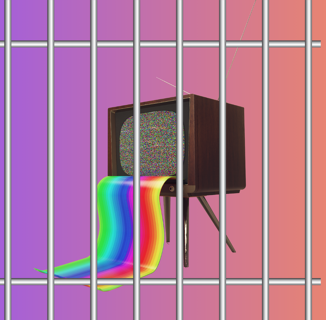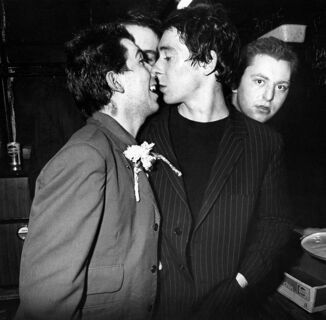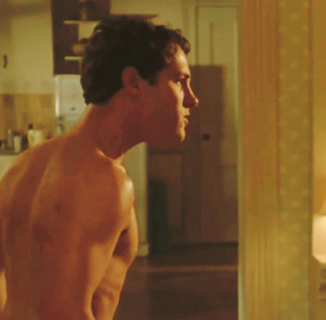On April 3, 2018, voters in Anchorage, Alaska cast the final ballots in the first election in the country to include a ballot measure mandating discrimination against transgender people. The ballot measureknown as Proposition 1would have both repealed protections for trans people in public accommodations under local law and added new discriminatory language barring transgender individuals from using appropriate restrooms in government buildings.
But after three weeks of voting by mail, months of campaigning, and years trying to secure and protect legal rights for LGBTQ people in Anchorage, voters said “No.” Around 53 percent of those who turned out to the polls cast a ballot against the measure.
The decisive victory for LGBTQ rights was historic. It was the first time that transgender people successfully defeated a stand-alone attack on our humanity at the ballot. The vote was life-saving for the Anchorage trans community, who faced an uncertain future under a prospective law that would have prevented them from safely entering buildings that are an essential part of everyday lifeincluding places of employment, schools, hospitals, courtrooms, and restaurants.
This fight in many ways became a barometer of where we are heading and how far we have progressed in the movement for trans justice. It was a campaign that required trans people to step out of the shadows, at great risk at times, to contend for their survival and basic dignity. It was one of the most important LGBTQ battles of the past two decades. And yet, outside of Anchorage, few people paid attention. With the exception of reporters from The Daily Beast (as well as ongoing coverage at INTO), no national publication followed the campaign in the days and weeks leading up to the vote.
This is not only a failure of journalismit is a failure of democracy. The vote was of crucial the importance to both the LGBTQ movement and to our opponents, and it should be the role of media to document both the forced behind the election and the stakes of the outcome. A victory for anti-trans groups would continue their momentum ahead of even bigger challenges in Massachusettsand possibly Montanain November. Meanwhile, a victory for LGBTQ equality would mark a monumental shift in public acceptance of transgender people in civic life.
But until the measure was defeated, no other national outlets reported on Prop. 1. With our bodies and lives being subject to a popular vote, it was painful to watch the high-stakes campaign ignored by national media.
Though it is easy and often accurate to chalk the media blackout up to general discomfort with trans people and bias in reporting, it was more complicated in this case. One clear answer to the question of what caused the anemic response to this vital moment can be traced to the man occupying the Oval Office.
Before Trump assumed office, state and local fights for LGBTQ rights received far greater attention from national outlets. In 2015, for example, Houston voters repealed the city’s comprehensive non-discrimination ordinance following a vicious campaign exclusively targeting trans people. That campaign garnered widespread media attention from national outlets, covered by publications like The Guardian, Vox, Slate, BuzzFeed, People, Upworthy, Deadspin, Huffington Post, Vice, and ATTN in the weeks leading up to the vote. When the ordinance was rejected, more outlets chimed in.
Likewise, when North Carolina passed House Bill 2, that state’s infamous anti-trans measure, nearly every major publication in the U.S. highlighted the measure and its impact on the LGBTQ community.
Though the coverage was not enough to stop the Houston repeal effort or the passage of HB 2, these stories served an important purpose: Media coverage helped build a national narrative about trans people, our humanity, and the need for a mobilized effort to combat widespread discrimination. News stories highlighting the economic impact of a bathroom bill on North Carolinawhich was projected to cost the state $3.76 billion in lost revenue over the next 12 yearshelped prevent Texas and other states from making the same mistakes.
With so much attention turned to President Trump’s every move and the growing chaos in the White House, state and local issues frequently fall from public attention. These important battles are now dangerously obscured by a relentless administration that is dependent on our fatigue to further an agenda antithetical to the rights and protections of LGBTQ people.
This presidency furthers a narrative in which trans people are situated in national discourses as victims: of violence, of Trump’s anti-trans policies, or of cruel mockery which permits us to be seen as less than equal. Or worse still, as fraudulent, as deviant, as unfit for public life.
But in Anchorage, there was a different story to follow: the story of a campaign that was prepared and mobilized. When opponents of equality trotted out the same, dangerous messaging about transgender people, Fair Anchorage fought back. The campaign countered the myth that transgender people are predators or that legal protections for trans individuals would compromise public safety. With organizers creating space for the local trans community to come into the light, the campaign made sure that voters turned out for their transgender friends, family members, neighbors, and people they were just getting to know for the first time.
In allowing people to share their stories, the fight became not about abstract ideas of fairness but real human beings. Voters had to contend with the actual trans people they met, saw on television, or heard on the radio whose lives and safety would have been compromised by a “Yes” vote. Trans youth like Col Lockard and parents of trans children like Cathy Gillis bravely came forward to put a face on the issue and say: “We are part of your community, too.”
This conversation was part of a years-long battle in Anchorage over the safety and dignity of trans people. In 2012, voters rejected Proposition 5, a ballot measure that would have expanded non-discrimination protections to include LGBTQ people. The campaign to defeat Prop. 5, just as in the most recent election, was fueled by anti-trans rhetoric and imagery. A video released by Alaska Family Councilwhich also spearheaded the “Yes on 1” campaigndepicted trans women as hairy aberrations who would invade women’s locker rooms. We literally became cartoons; cautionary tales; and shadowy figures evoking danger.
With so many people still unfamiliar with transgender people, the odds were stacked against the transgender community. The pro-LGBTQ ordinance was voted down by a 58 to 42 percent margin.
LGBTQ leaders have learned a great deal from the defeats of the recent past. In Houston, we did not center transgender voices and we did not stand with trans Texans to counter the insidious messaging of our opponents. This time we did. It was the undeniable beauty and richness of our humanity that saved the day in Anchorageeven without national attention. Trans people spoke our truth directly to voters, and they listened.
In a small, conservative city in Alaska, people chose to let us live.
This victory must be understood as a testament to the fierce resilience of trans people and the effectiveness of a campaign that centers trans leadership. It was also propelled by the few media outlets that did cover the Prop. 1 campaignhighlighting the distortions of our opponents and the potential outcomes for trans people when our lives are put to a vote. Without journalists interrogating the messaging of anti-trans organizations and shedding light on the systemic discrimination trans people endure, these struggles will be even harder to overcome.
As we look ahead to Massachusetts, it is imperative that we keep learning from our mistakes. In order to gain support across the country as we continue to defend our existence, we need journalists to pay attention to the precariousness of our lives and bodies. If no one cares enough to elevate our stories, it is harder to convince voters to care enough to defend us.
Image via Fair Anchorage
Help make sure LGBTQ+ stories are being told...
We can't rely on mainstream media to tell our stories. That's why we don't lock our articles behind a paywall. Will you support our mission with a contribution today?
Cancel anytime · Proudly LGBTQ+ owned and operated
Read More in Culture
The Latest on INTO
Subscribe to get a twice-weekly dose of queer news, updates, and insights from the INTO team.
in Your Inbox













